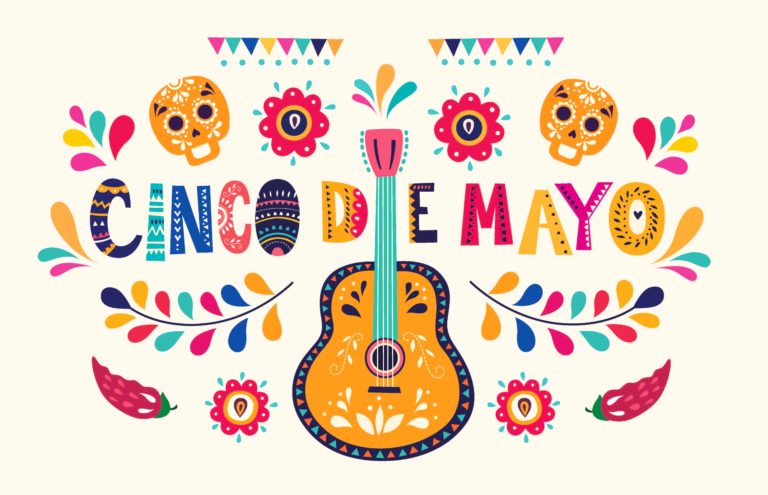What is Cinco de Mayo?
Cinco de Mayo was created to celebrate Mexican heritage, and it is now widely celebrated in the U.S. Celebrations are prevalent in cities that have significant Mexican populations and ancestry, especially in the south and southwest. Cinco de Mayo is celebrated widespread and is a colorful, inclusive festival.
The holiday has its roots in a series of events in Mexico. The Mexican government was trying to recover from a long series of wars. They needed to borrow money from foreign countries to pay for all the warfare, so they borrowed money from France, England, and Spain. The Mexican government needed two years to pay back the money because their people had suffered enough economically. The countries sent a huge army to Mexico to force them to pay up or else.
The French leader marched to the city of Puebla, which is east of Mexico City. They fought the greatest military force in the world in the Franco/Mexican War revealing how the Mexican victory against French forces at the battle of Puebla came to represent the strength and determination of the Mexican people. The battle was called the Battle of Puebla on May 5, 1862. They successfully defeated the French’s attempt to take over their cities.
Why is Cinco de Mayo celebrated?
Cinco de Mayo is celebrated because it commemorates the victory over the French’s attempt to take over their cities at the Battle of Puebla on May 5, 1862. The Mexican army was surrounded two to one, but still led their country to victory. The first Cinco de Mayo celebration in the U.S., located in Southern California in 1863, represented solidarity with Mexico against French rule. Nowadays, it’s an opportunity to celebrate Mexican traditions, culture, food, and victory over the French.
How is Cinco de Mayo celebrated?
American celebrations of Cinco de Mayo feature parades and parties including Mariachi bands, Mexican folk music, dancing, Mexican and Mexican-American cuisine, Mexican-inspired drinks, and costumes. Parades and patriotic festivities grew over time and became more widely celebrated. This is the way for the people of Mexican heritage to show their national pride. They commemorate the holiday of strength and independence by celebrating in a myriad of ways.
Classroom Activities that Celebrate Mexican Culture and Cinco de Mayo
Cinco de Mayo should be taught to educate students about other cultures. The teacher’s goal is to ensure that those cultures are respected equally. Begin by teaching students the history behind Cinco de Mayo, and create activities that allow students to celebrate the Mexican culture with different foods, dancing, music, art, readings, and videos. Below are several ideas to celebrate Cinco de Mayo in classrooms from Pre-K-12, in-person or remotely.
- View a series of videos explaining what Cinco de Mayo is, and the history of what happened. The videos can be found at Discovery Education, the History Channel, and a plethora of other online websites.
- Read a myriad of books and publications on Cinco de Mayo and the reason for the celebration. Use the books as teaching tools to teach the history and how important learning about other cultures is in the classroom. Reading books and encouraging students to read will enhance the experience and learn about the importance of history.
- Perform festival-like activities by having food and drinks that model those at Cinco de Mayo parades and parties. Classrooms that have in-person learning can set a date and have parents help with these activities. Students love to include food in their classroom events, and this will be memorable. Students remember what they “do.”
- Dress up in costumes and clothing from Mexican culture and include virtual students in this activity by incorporating Google Meet or Zoom times for all students to view themselves and fellow classmates.
- Complete reenactments of the war by allowing students to dress up, study, and discuss how the Mexican and French armies fought, and how the Mexican army won at the Battle of Puebla. This activity can be as simple or complex depending on the grade level and age of the students.
- Playing traditional music, hanging decorations, and dancing are all traditional types of celebrations of Cinco de Mayo. Classrooms can be perfect for setting the stage and allowing students to experience activities that mimic real celebrations that take place in larger cities.
- Art projects – Complete Mexican-style paintings to display in class or online. This can be an enjoyable, therapeutic, and educational activity. Most students enjoy art projects, and this activity can be expanded to include a virtual or in-person museum to display the art.
- Complete a study of Mexico and include historical, cultural, or biographical content. This can be as simple or complex depending on the grade level. This is one of the most important aspects of teaching because people learn from history’s victories and mistakes.




